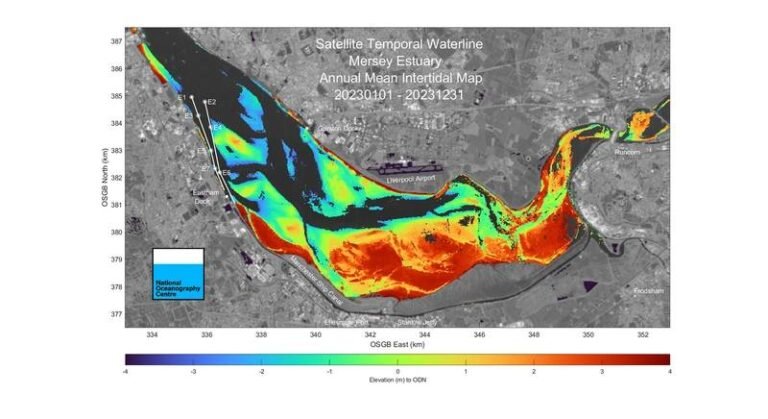Revolutionizing Port Management: How Satellite Data is Changing the Game
Port management is a complex and crucial aspect of maritime operations, especially in busy and dynamic waterways like the Mersey River. Scientists at the UK’s National Oceanography Centre (NOC) in Liverpool have recently made significant strides in using satellite data to provide valuable insights into the Mersey River, ultimately revolutionizing how port operators manage navigation channels.
Mapping Changes from Space
Through a project funded by the UK Space Agency and in collaboration with the Channel Coastal Observatory (CCO) and Peel Ports Group, NOC’s scientists have demonstrated that changes in areas exposed at low tide can be effectively mapped using satellite data. This breakthrough allows port operators to anticipate and address issues such as sand or mud movements that could potentially block navigation channels.
Enhancing Navigational Safety
Regular monitoring of an estuary the size of the Mersey River can be challenging and costly using traditional survey methods. However, the use of satellite imagery combined with data from the Gladstone Tide Gauge and the SWOT satellite has enabled a more precise understanding of tidal water levels and riverbed changes from 2018 to 2023. This information is invaluable for planning dredging operations efficiently and ensuring navigational safety.
Proactive Management Strategies
Russell Bird, Deputy Group Harbour Master at Peel Ports Group, highlights the significance of this technology in enhancing navigational safety and dredging strategies. The ability to proactively manage significant changes in the river allows for more efficient operations and cost savings in the long run.
Leading the Way in Coastal Management
The success of this project showcases Liverpool’s position at the forefront of utilizing satellite technology for coastal management challenges. The methods developed by NOC have the potential to benefit other regions in the UK and beyond, setting a new standard for port management practices.
Overall, the integration of satellite data into port management practices marks a significant step forward in optimizing operations, ensuring safety, and minimizing costs in dynamic waterways like the Mersey River. The collaboration between scientific research institutions, government agencies, and industry partners demonstrates the power of innovation in addressing complex maritime challenges.

